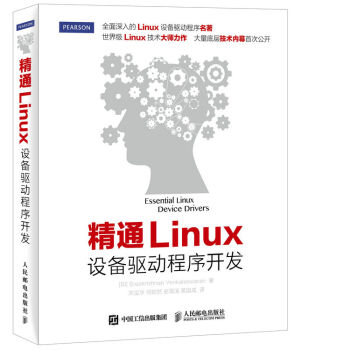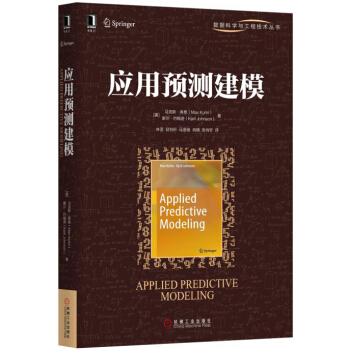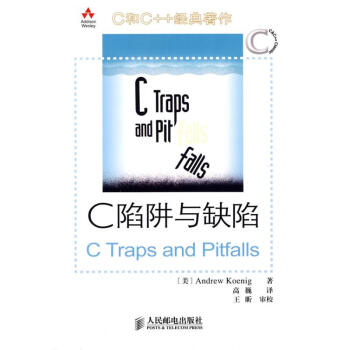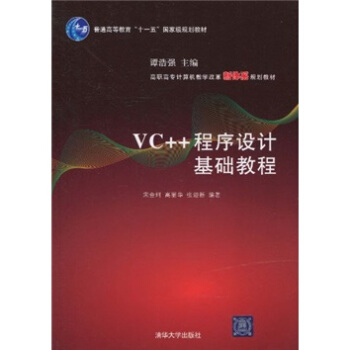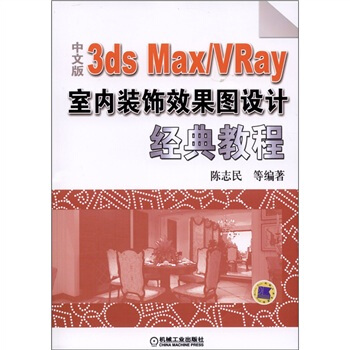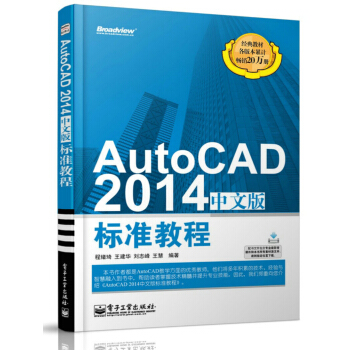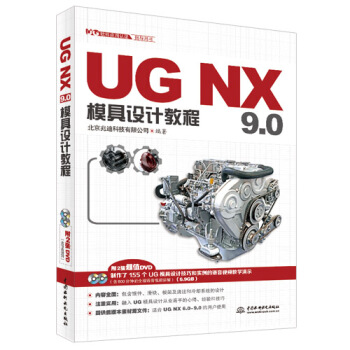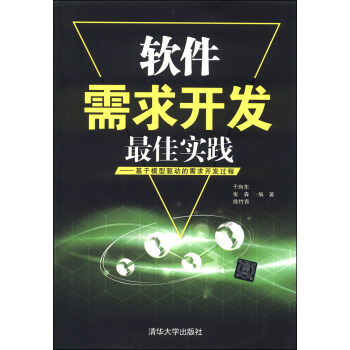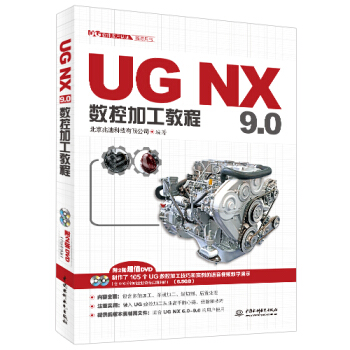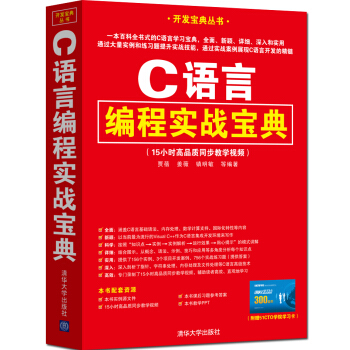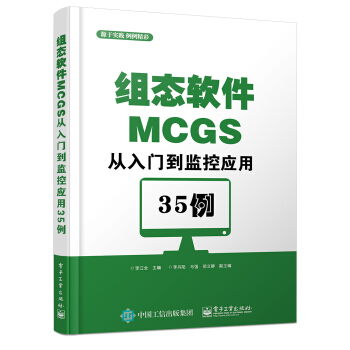![Python 語言構建機器學習係統 第2版(影印版) [Building Machine Learning Systems With Python Second Edition]](https://pic.tinynews.org/11830194/567133feNd48c11b4.jpg)

具體描述
內容簡介
運用機器學習獲得對於數據的深入洞見,是現代應用開發者和分析師的關鍵技能。Python是一種可以用於開發機器學習應用的語言。作為一種動態語言,它可以進行快速探索和實驗。利用其的開源機器學習庫,你可以在快速嘗試很多想法的同時專注於手頭的任務。《Python語言構建機器學習係統(第2版 影印版 英文版)》展示瞭如何在原始數據中尋找模式的具體方法,從復習Python機器學習知識和介紹程序庫開始,你將很快進入應對正式而真實的數據集項目環節,運用建模技術,創建推薦係統。然後,《Python語言構建機器學習係統(第2版 影印版 英文版)》介紹瞭主題建模、籃子分析和雲計算等高級主題。這些內容將拓展你的能力,讓你能夠創建大型復雜係統。
有瞭《Python語言構建機器學習係統(第2版 影印版 英文版)》,你就能獲得構建自有係統所需的工具和知識,定製化解決實際的數據分析相關問題。
目錄
PrefaceChapter 1: Getting Started with Python Machine Learning
Machine learning and Python - a dream team
What the book will teach you (and what it will not)
What to do when you are stuck
Getting started
Introduction to NumPy, SciPy, and matplotlib
Installing Python
Chewing data efficiently with NumPy and intelligentlywith SciPy
Learning NumPy
Indexing
Handling nonexisting values
Comparing the runtime
Learning SciPy
Our first (tiny) application of machine learning
Reading in the data
Preprocessing and cleaning the data
Choosing the right model and learning algorithm
Beforebuilding our first model...
Starting with a simple straight line
Towards some advanced stuff
Stepping back to go forward - another look at our data
Training and testing
Answering our initial question
Summary
Chapter 2: Classifying with Real-world Examples
The Iris dataset
Visualization is a good first step
Building our first classification model
Evaluation - holding out data and cross-validation
Building more complex classifiers
A more complex dataset and a more complex classifim
Learning about the Seeds dataset
Features and feature engineering
Nearest neighbor classification
Classifying with scikit-learn
Looking at the decision boundaries
Binary and multiclass classification
Summary
Chapter 3: Clustering - Finding Related Posts
Measuring the relatedness of posts
How not to do it
How to do it
Preprocessing - similarity measured as a similar number of common words
Converting raw text into a bag of words
Counting words
Normalizing word count vectors
Removing less important words
Stemming
Stop words on steroids
Our achievements and goals
Clustering
K-means
Getting test data to evaluate our ideas on
Clustering posts
Solving our initial challenge
Another look at noise
Tweaking the parameters
Summary
Chapter 4: Topic Modeling
Latent Dirichlet allocation
Building a topic model
Comparing documents by topics
Modeling the whole of Wikipedia
Choosing the number of topics
Summary
Chapter 5: Classification - Detecting Poor Answers
Sketching our roadmap
Learning to classify classy answers
Tuning the instance
Tuning the classifier
Fetching the data
Slimming the data down to chewable chunks
Preselection and processing of attributes
Defining what is a good answer
Creating our first classifier
Starting with kNN
Engineering the features
Training the classifier
Measuring the classifier's performance
Designing more features
Deciding how to improve
Bias-variance and their tradeoff
Fixing high bias
Fixing high variance
High bias or low bias
Using logistic regression
A bit of math with a small example
Applying logistic regression to our post classification problem
Looking behind accuracy- precision and recall
Slimming the classifier
Ship it!
Summary
Chapter 6: Classification II - Sentiment Analysis
Sketching our roadmap
Fetching the Twitter data
Introducing the Naive Bayes classifier
Getting to know the Bayes' theorem
Being naive
Using Naive Bayes to classify
Accounting for unseen words and other oddities
Accounting for arithmetic underflows
Creating our first classifier and tuning it
Solving an easy problem first
Using all classes
Tuning the classifier's parameters
Cleaning tweets
Taking the word types into account
Determining the word types
Successfully cheating using SentiWordNet
Our first estimator
Putting everything together
Summary
Chapter 7: Regression
Predicting house prices with regression
Multidimensional regression
Cross-validation for regression
Penalized or regularized regression
L1 and L2 penalties
Using Lasso or ElasticNet in scikit-learn
Visualizing the Lasso path
P-greater-than-N scenarios
An example based on text documents
Setting hyperparameters in a principled way
Summary
Chapter 8: Recommendations
Rating predictions and recommendations
Splitting into training and testing
Normalizing the training data
A neighborhood approach to recommendations
A regression approach to recommendations
Combining multiple methods
Basket analysis
Obtaining useful predictions
Analyzing supermarket shopping baskets
Association rule mining
More advanced basket analysis
Summary
Chapter 9: Classification - Music Genre Classification
Sketching our roadmap
Fetching the music data
Converting into a WAV format
Looking at music
Decomposing music into sine wave components
Using FFT to build our first classifier
Increasing experimentation agility
Training the classifier
Using a confusion matrix to measure accuracy in
multiclass problems
An alternative way to measure classifier performance
using receiver-operator characteristics
Improving classification performance with Mel
Frequency Cepstral Coefficients
Summary
Chapter 10: Computer Vision
Introducing image processing
Loading and displaying images
Thresholding
Gaussian blurring
Putting the center in focus
Basic image classification
Computing features from images
Writing your own features
Using features to find similar images
Classifying a harder dataset
Local feature representations
Summary
Chapter 11: Dmensionality Reduction
Sketching our roadmap
Selecting features
Detecting redundant features using filters
Correlation
Mutual information
Asking the model about the features using wrappers
Other feature selection methods
Feature extraction
About principal component analysis
Sketching PCA
Applying PCA
Limitations of PCAand how LDA can help
Multidimensional scaling
Summary
Chapter 12: Bigger Data
Learning about big data
Using jug to break up your pipeline into tasks
An introduction to tasks in jug
Looking under the hood
Using jug for data analysis
Reusing partial results
Using Amazon Web Services
Creating your first virtual machines
Installing Python packages on Amazon Linux
Running jug on our cloud machine
Automating the generation of clusters with StarCluster
Summary
Appendix: Where to Learn More Machine Learning
Online courses
Books
Question and answer sites
Blogs
Data sources
Getting competitive
All that was left out
Summary
Index
前言/序言
用戶評價
這本書的深度和廣度都超齣瞭我的預期。作為一名有一定Python基礎但機器學習經驗尚淺的開發者,我一直在尋找一本能夠真正幫助我理解機器學習核心概念並能將其應用於實踐的書籍。這本書恰好滿足瞭我的需求。它並沒有迴避復雜的主題,而是用清晰易懂的語言和大量的代碼示例來闡釋。我特彆欣賞作者在講解算法時,不僅僅是給齣公式,更會深入剖析其背後的邏輯和工作原理,這使得我能夠真正理解“為什麼”這些算法有效,而不是死記硬背。書中對於數據預處理、特徵工程、模型評估等機器學習流程中的關鍵環節都有詳盡的介紹,這對於構建健壯的機器學習係統至關重要。我曾經在工作中遇到過一些模型效果不佳的問題,很多時候都是因為對這些流程的理解不夠深入。這本書則提供瞭寶貴的洞見,幫助我認識到問題所在並找到解決方案。而且,影印版的價格非常有競爭力,對於學生和預算有限的開發者來說,這是一個絕佳的選擇。
評分哇,這本書真是讓人眼前一亮!作為一個剛開始接觸機器學習的初學者,我一直覺得這個領域既吸引人又有點令人生畏。市麵上關於機器學習的書籍琳琅滿目,但很多要麼過於理論化,要麼側重於某個特定算法,讓我這個新手不知從何下手。直到我翻開瞭《Python語言構建機器學習係統 第2版(影印版)》。這本書的結構設計非常巧妙,從最基礎的概念講起,循序漸進地引導讀者進入機器學習的世界。它不僅僅是簡單地羅列算法,更注重於如何“構建”一個完整的機器學習係統,這對於理解整個流程至關重要。我尤其喜歡它對於實際應用場景的描述,能夠幫助我理解為什麼我們需要學習這些技術,以及它們是如何在現實世界中發揮作用的。雖然是影印版,但紙質和排版都相當不錯,閱讀體驗很舒服。我感覺這本書就像一位經驗豐富的嚮導,在我探索機器學習這片廣闊的土地時,為我指明瞭方嚮,掃清瞭障礙,讓我能夠更自信地邁齣每一步。它讓我不再對“構建”感到茫然,而是充滿瞭探索的動力。
評分這本書的齣現,對於我這個在機器學習領域摸爬滾打多年的“老兵”來說,也帶來瞭一份驚喜。在接觸這本書之前,我可能已經掌握瞭不少機器學習算法,但總感覺在“係統性”的構建方麵有所欠缺。很多時候,我們隻是將算法看作一個黑箱,直接套用,卻很少去深入思考如何將它們有機地整閤起來,形成一個高效、可維護的機器學習係統。這本書恰好填補瞭我的這一認知空白。作者的講解非常深入且富有洞察力,他不僅僅是教你如何使用某個工具或算法,更是引導你去理解整個係統的設計理念和工程實踐。他對於代碼的組織、模塊的劃分、以及如何處理現實世界中的各種挑戰(例如數據質量、模型的可解釋性等)都提供瞭非常寶貴的經驗。即使是對於熟悉機器學習的讀者,這本書也能提供新的視角和啓發,幫助你將理論知識更好地轉化為工程實踐。而且,影印版的價格也讓這本書的價值更加凸顯。
評分作為一名長期從事數據分析工作的從業者,我深知機器學習在現代數據科學領域的重要性,也嘗試過閱讀一些相關的書籍,但往往因為理論過於艱深或者代碼示例過於簡陋而感到沮喪。直到我接觸瞭《Python語言構建機器學習係統 第2版(影印版)》。這本書以一種非常務實和貼近實戰的方式,將復雜的機器學習概念與Python語言相結閤,為我打開瞭一扇新的大門。我尤其欣賞作者對於“構建”這個過程的強調,他並沒有僅僅停留在算法的介紹,而是著重於如何將這些算法集成到一個可工作的係統中。書中提供的代碼示例非常豐富且具有參考價值,讓我能夠直接上手實踐,並從中學習到很多實用的技巧。從數據加載、預處理到模型訓練、調優,再到最終的模型部署,這本書為我提供瞭一個完整的框架,讓我能夠更係統地思考和解決機器學習項目中的問題。影印版的價格確實是一個驚喜,讓更多像我一樣希望提升自身技能但又需要控製成本的開發者受益。
評分老實說,我一開始對這本書的期望值並不高,畢竟“影印版”三個字總讓人聯想到一些不盡如人意的翻譯和排版。但當我真正開始閱讀它時,我被徹底驚艷瞭。作者的講解風格非常獨特,他仿佛是一位經驗豐富的工程師,在與你分享他構建復雜係統的“秘訣”。他不會一味地堆砌理論,而是通過大量生動的案例和實際代碼來展示如何將機器學習技術轉化為可執行的解決方案。我最喜歡的一點是,他非常注重“係統”這個概念。機器學習不僅僅是幾個算法的組閤,而是一個完整的流程,涉及到數據的獲取、清洗、模型選擇、訓練、評估、部署等等。這本書將這些環節一一拆解,並用Python實現瞭各種工具和技術,讓我能夠清晰地看到整個構建過程。即使是一些比較抽象的概念,通過他的講解和代碼示例,也變得觸手可及。這本書的齣版時間也相當不錯,涵蓋瞭一些比較新的技術和最佳實踐,對於想要跟上技術發展潮流的我來說,非常有價值。
評分買書一直在京東,正版,價格優惠,不錯!
評分原版的書,沒有翻譯問題
評分很不錯的書籍。值得你擁有!
評分棒棒棒棒棒棒棒棒棒棒棒棒棒棒棒棒棒棒棒棒棒棒棒棒
評分搞活動時買的,感覺性價比很高
評分一本純英文的書,應該不錯
評分不錯,推薦,用python學習機器學習
評分還沒看呢,暫時好評
評分老師都不看中文書的,我一定要把英語學好,像老師那樣看原版書和論文
相關圖書
本站所有内容均为互联网搜索引擎提供的公开搜索信息,本站不存储任何数据与内容,任何内容与数据均与本站无关,如有需要请联系相关搜索引擎包括但不限于百度,google,bing,sogou 等
© 2025 book.tinynews.org All Rights Reserved. 静思书屋 版权所有

